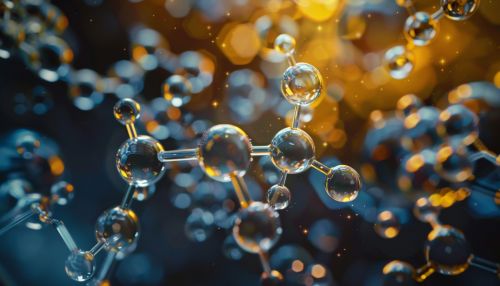Principal Elements in Organic Compounds: Bond Formation and Electron Sharing
Introduction
Organic compounds are the backbone of life on Earth, forming the basis for all living organisms. These compounds, composed primarily of carbon atoms, exhibit a vast array of chemical behaviors and reactivities due to their unique ability to form stable, covalent bonds with a variety of other elements. This article delves into the principal elements in organic compounds, focusing on bond formation and electron sharing, which are fundamental to understanding the structure and function of these compounds.
Principal Elements in Organic Compounds
Organic compounds are primarily composed of carbon (C), hydrogen (H), oxygen (O), nitrogen (N), phosphorus (P), and sulfur (S). These elements, often referred to as CHNOPS, are the most abundant in living organisms and play crucial roles in life's processes.
Carbon
Carbon is the primary element in organic compounds. Its unique ability to form four covalent bonds with other atoms, including other carbon atoms, allows it to serve as the basic building block of organic compounds. This tetravalency of carbon leads to the formation of complex and diverse structures, from simple hydrocarbons to large biomolecules like proteins and DNA.
Hydrogen
Hydrogen atoms are the most common bonding partners for carbon in organic compounds. The bond between carbon and hydrogen (C-H) is highly stable, making it a fundamental component of organic molecules.
Oxygen
Oxygen is another key element in organic compounds. It is often involved in the formation of functional groups, such as hydroxyl (-OH), carbonyl (C=O), and carboxyl (COOH) groups, which significantly influence the properties and reactivities of organic compounds.
Nitrogen
Nitrogen is a vital component of amino acids, the building blocks of proteins. It is also found in other important biomolecules like nucleic acids and ATP. Nitrogen's ability to form three covalent bonds allows it to create a variety of structures within organic compounds.
Phosphorus and Sulfur
Phosphorus and Sulfur are less abundant but still essential elements in organic compounds. Phosphorus is a key component of nucleic acids and ATP, while sulfur is found in some amino acids and vitamins.


Bond Formation in Organic Compounds
Bond formation in organic compounds primarily involves the sharing of electrons between atoms, leading to the formation of covalent bonds. There are three types of covalent bonds: single, double, and triple, which correspond to the sharing of one, two, or three pairs of electrons, respectively.
Single Bonds
Single bonds, represented as '-,' involve the sharing of one pair of electrons between two atoms. These bonds are the most common in organic compounds and allow for rotation around the bond axis, leading to conformational flexibility in molecules.
Double Bonds
Double bonds, represented as '=', involve the sharing of two pairs of electrons. These bonds are shorter and stronger than single bonds and do not allow for rotation, leading to rigidity in the molecular structure. The presence of a double bond often results in the formation of isomers, compounds with the same molecular formula but different structures.
Triple Bonds
Triple bonds, represented as '≡,' involve the sharing of three pairs of electrons. These bonds are the shortest and strongest of the covalent bonds, leading to very rigid and linear structures. Triple bonds are less common in organic compounds but are a key feature in molecules like acetylene and nitriles.
Electron Sharing in Organic Compounds
Electron sharing in organic compounds is a crucial aspect of their chemical behavior. The type of electron sharing can significantly influence the properties and reactivities of these compounds.
Covalent Bonding
In covalent bonding, electrons are shared equally between two atoms, resulting in a stable bond. This type of bond is common in organic compounds, particularly in C-H and C-C bonds.
Polar Covalent Bonding
In polar covalent bonding, electrons are shared unequally, resulting in a bond with a positive and a negative end, or a dipole. This type of bonding is common in organic compounds containing electronegative elements like oxygen and nitrogen, leading to the formation of polar molecules.
Ionic Bonding
Ionic bonding, while less common in organic compounds, can still occur, particularly in organic salts. In this type of bonding, electrons are transferred from one atom to another, resulting in the formation of positively and negatively charged ions.
